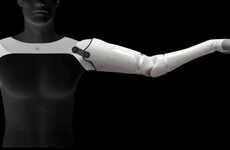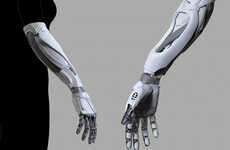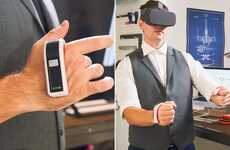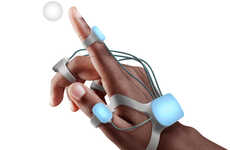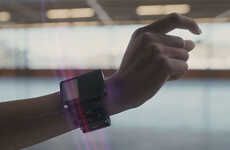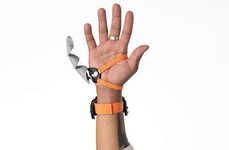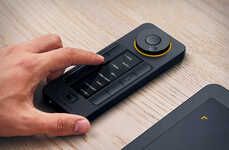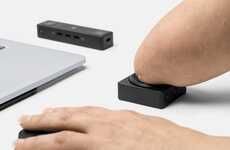
'Shortcut' Helps Amputees to Control Digital Platforms
References: digital-prosthesis.de & fastcodesign
'Shortcut,' the self-titled "digital prosthesis," is a device that helps amputees to seamlessly interact with digital interfaces.
Most available technological interfaces today, from mouses to keyboards to touchscreens, requires fine manual motor skills that most available prosthesis can't possibly imitate efficiently. This means that manual amputees have a huge amount of trouble using devices.
The Shortcut is a device that controls digital interfaces through what is known as the "phantom hand" effect. Even though amputees have most their hands, they can still control the muscles in their wrists that would otherwise move their hands and fingers. By sensing these minute muscle spasms, the Shortcut device lets amputees control digital environments with several rudimentary commands: things like moving the cursor, scrolling through pages, and left or right clicking.
Most available technological interfaces today, from mouses to keyboards to touchscreens, requires fine manual motor skills that most available prosthesis can't possibly imitate efficiently. This means that manual amputees have a huge amount of trouble using devices.
The Shortcut is a device that controls digital interfaces through what is known as the "phantom hand" effect. Even though amputees have most their hands, they can still control the muscles in their wrists that would otherwise move their hands and fingers. By sensing these minute muscle spasms, the Shortcut device lets amputees control digital environments with several rudimentary commands: things like moving the cursor, scrolling through pages, and left or right clicking.
Trend Themes
1. Digitally Interfaced Prosthetics - The development of devices like 'Shortcut' paves the way for more advanced digitally interfaced prosthetics, revolutionizing how amputees interact with technology.
2. Phantom Hand Control - The use of the 'phantom hand' effect in devices like Shortcut opens up possibilities for controlling digital interfaces using muscle spasms, offering new avenues for innovation in assistive technology.
3. Enhanced Accessibility for Amputees - Devices like Shortcut provide enhanced accessibility for amputees, empowering them to effortlessly navigate and interact with digital platforms.
Industry Implications
1. Prosthetics - The prosthetics industry can capitalize on the development of digitally interfaced devices like Shortcut to create more advanced and user-friendly solutions for amputees.
2. Technology - The technology industry can leverage the 'phantom hand' control concept to develop innovative solutions that enhance accessibility and inclusivity in digital interfaces.
3. Assistive Technology - The assistive technology industry can integrate the use of muscle spasms and digital interfaces, like Shortcut, to create groundbreaking advancements in improving the quality of life for amputees.
2.5
Score
Popularity
Activity
Freshness


